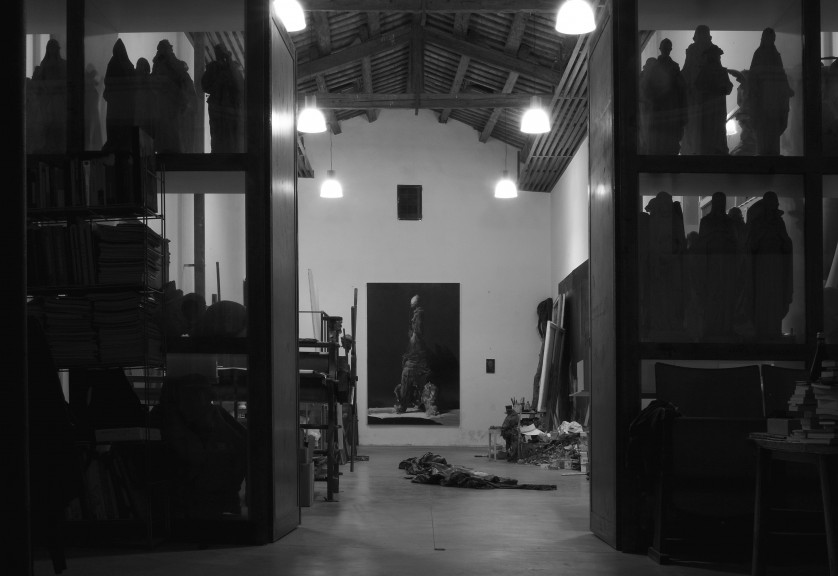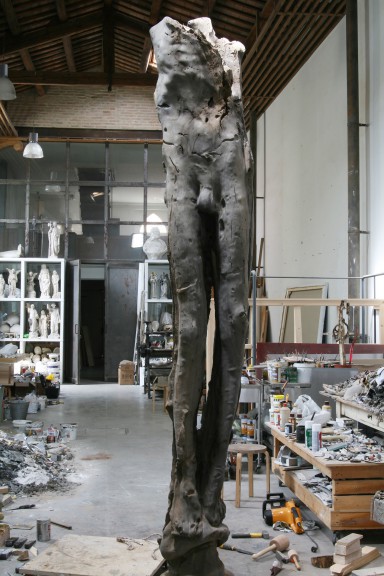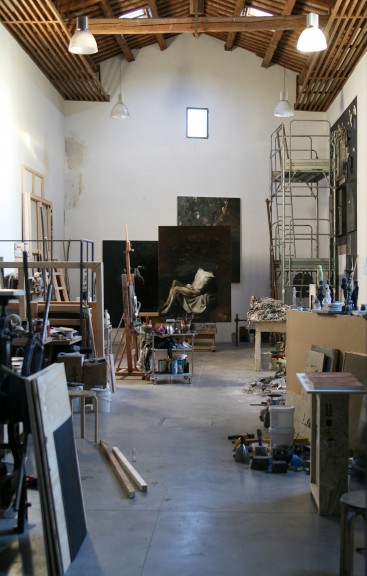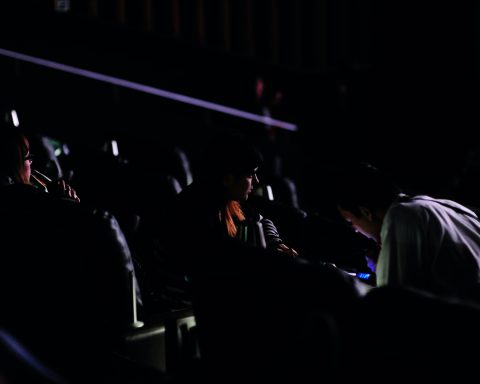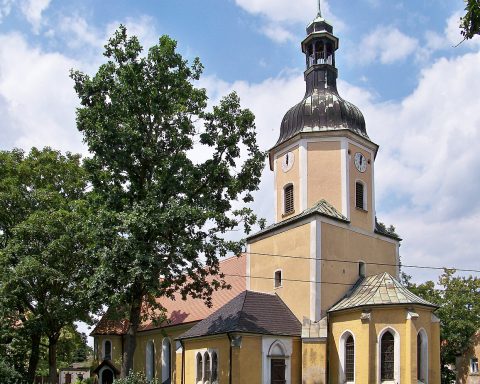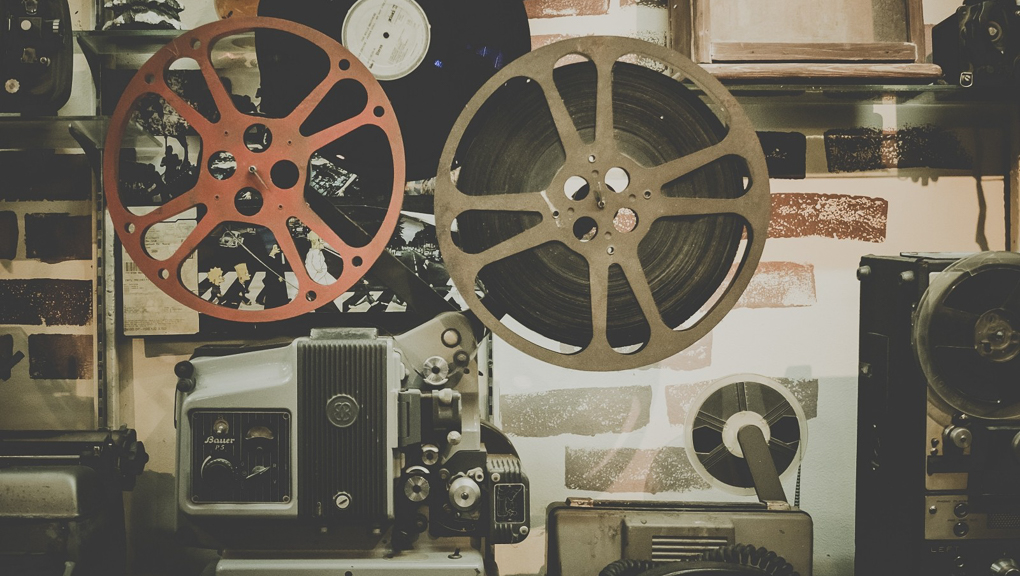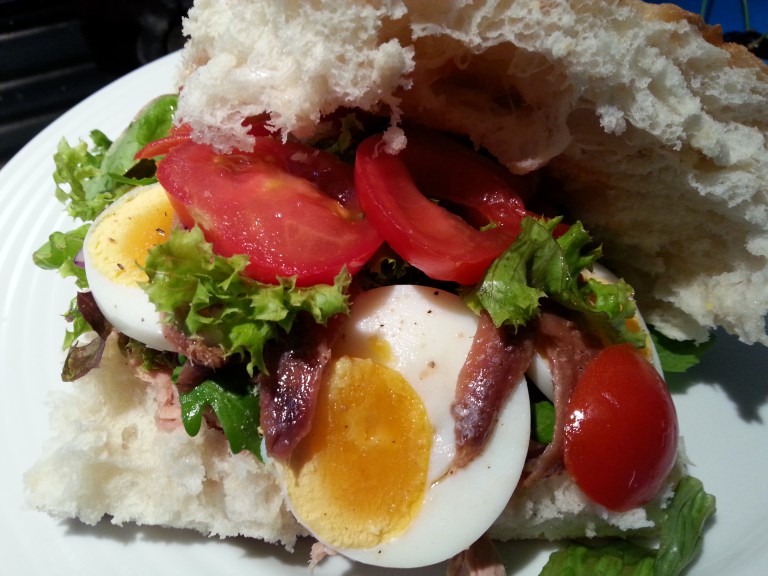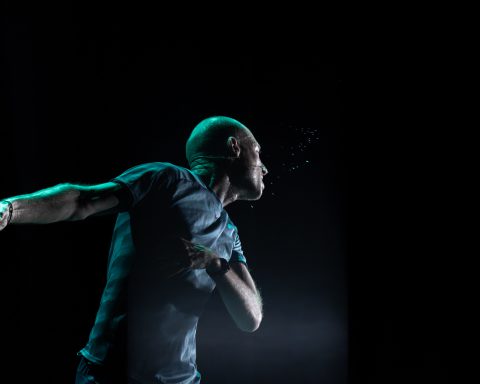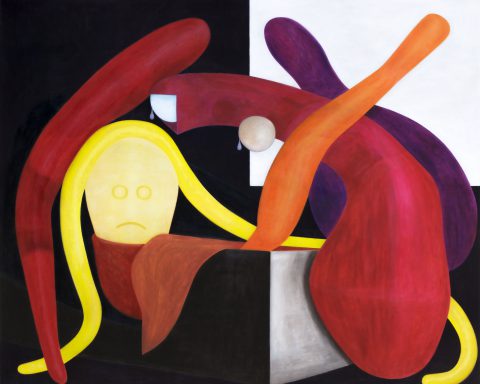I’m sitting in my garden, soon to be studio, and listening to Tim Hecker. With everything that’s been going on lately, I’m having a hard time concentrating. Recently I skyped with Italian artist Nicola Samori. I asked him if he listened to music while he worked. He said not usually, but when he did, he listened to people like Tim Hecker.
I’m actually not surprised that he has no trouble blocking out the rest of the world. I saw the excitement in his eyes when he talked about his work. He described it as a total sensory experience. He is aware of the friction, or lack thereof, as the paint adheres to the surface. He hears the squirt of the paint from the tube. He rearranges space as he moves towards and away from the object of his focus. He is totally and completely absorbed into the process.
This is less about work and more about calling: and that calling is inescapably Italian. Most 3 or 4 year olds would be fidgeting in church, but Samori remembers being fascinated by the Byzantine figures in the centuries-old Church of San Pietro in Trento he and his family used to go to on Sundays. While his contemporaries go abroad for inspiration, he turns to what he knows; to that which is ingrained in him, that which remains timeless.
Samori steers away from statements and turns to the progression of the medium.
He paints with old world skill and sensitivity, only to slice and dice, scrape or fold; simultaneously building upon and destroying the history of painting. He is bold, brazen and unbelievably fearless. Like I said, he has a calling. Could that calling be to restore Italian art to its former glory?
Eigen Art definitely believes in his abilities. After discovering him at his 2011 exhibition, Imaginifragus at Galerie Christian Ehrentraut in Berlin, they monitored him for five years before signing him. Samori admits that he has come a long way in finding his voice during that time. He has turned away from the abstract and now mainly works figuratively. He wants to be pure, and what can be more pure than the human body? We all have one. It is the language we can all relate to regardless of who we are or where we come from.
But to say Samori is a figure painter or sculptor would be complete incompetence.
His works are so modern they almost defy description.
The paintings are paintings, but they are also sculptures. They are also remnants of performance.
Eigen Art owner Gerd Harry Lybke came to Samori’s studio in Bagnacavallo and offered him his first solo exhibition as one of their artists a year ago. He came to Leipzig and explored the gallery and the Spinnerei complex in which the gallery sits. The area of town has a lot of decaying industrial sites that have been empty for a very long time. Their current state is an interesting one, as moments of past lives peel away to reveal former past lives.
Double Page (Of Frogs and Flowers) opened in June and runs through 3 September. My first instinct when I saw the jpeg of the 3 x 6 meter focal piece was, “This is Leipzig.” That was even before I talked to him or had seen the exhibition.

Double Page (of Frogs and Flowers), 2016
Oil on canvas
Triptych, 300 x 200 cm each
courtesy Galerie EIGEN + ART Leipzig/Berlin
Once I saw it in the flesh, so to speak, I saw that it was much more layered than that. He painted the scene and then with only the skin of the paint dry, he folded it to print the “double”. When he did this, not only did he create a double, but he tore the flesh off the painting, revealing its mutilated core. The result is a breathtaking combination of internal and external, of finished and in process, of facade and reality. And, as I’ve said, of old and new, but the new is the unveiling rather than the covering up. He deconstructs and reconstructs at once.
In each piece Samori looks at doubling from a new perspective.
With one he folds, with another he painstakingly removes bits of paint from one part of the painting to create images in a different part. With another work, he presses two canvases together as though they were kissing, leaving each forever changed and intertwined. With yet another, he shreds the paint off of a face like one would shred documents to prohibit their discovery.
With every process, we feel the action because he leaves the debris. Not only is it NOT discarded, but it is elevated to equal or greater status by allowing it to fall and remain on a shelf of copper, or encasing the work in glass and protecting the results from the world outside his performance.
I am not insinuating the action is theatrical and just for show. On the contrary, he is as much a part of the work as the work itself. From the months of research and preparation to the moment his brush touches the surface, to the elevation of the piece through its seeming destruction, he is completely and totally engrossed in the process.
What he removes is just as important as what he leaves. It has only taken on a new structure. Just as he rearranges three dimensional space as he moves through it to create his work, he merely rearranges matter in his work. He doesn’t elevate the painted image. He doesn’t treat it like it’s precious. He shows how mortal it is and, in so doing, reflects our mortality.
I can visualize him in his studio (which, by the way, is a converted old church) with all his senses heightened as he moves between the various pieces in progress. The only sound is what he makes. His nose is full. His eyes are full. His hands are full. His mind is full. And his heart is full.
Nicola Samori
Double Page (Of Frogs and Flowers)
24 June – 3 Sept 2016
Galerie EIGEN + ART
Spinnereistraße 7, Halle 5, Leipzig

